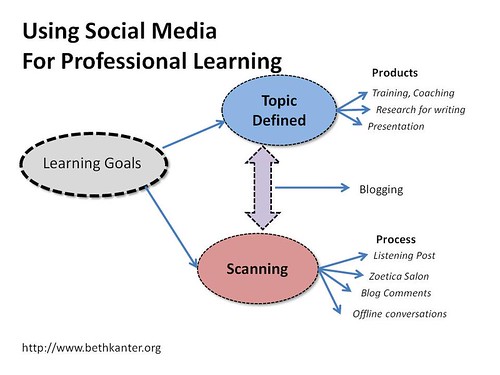
Many years ago before digital cameras and children, my husband and I used to spend many hours combining two past times: birding and photography. Over the holidays, we picked out some of the best to scan. Looking at these photos reminds me of how much focused attention we gave to setting up the shot, shooting during the best time for light, debating the rule of thirds, taking photos at different angles, f-stops, and timings, etc. There was a slowness to it that we don’t have with digital photography (perhaps because the slide film was expensive and we didn’t want to waste money).
Over the holidays, I took an all too brief social media break to spent time with family. It gave me some reflection time away from the daily fast-paced, always moving forward world of social media.
This morning I came across a Tweet from Debra Askanase who writes the Community Organizer Blog which lead to a conversation on SocialButterfly’s blog “Name Two Blogs That Get You Thinking.” I’ve been giving some mindful attention to my system for capturing and sharing professional learning online, using social media – and blog reading habits are definitely a part of that system. Debra posed a very good question frame question about how to pick blogs to follow: Does the blog offer consistent insight and education about an area I want to learn about?
This made reflect on my professional learning system captured in the MindMap below:

My system supports my learning goals: One path results in a product and the other is a process. Product-driven learning usually has a predefined specific topic that I need to research with the end goal of creating a presentation, training materials, or writing an article, report, book chapter or book.
The product-driven learning is mindful, mostly linear, and focused. I use knowledge trees, outlines, and focused thinking to identify what I need to learn and questions I need to ask. I identify the key SME experts and immerse myself in their thinking. (Since I’m working on an array of subjects over the past five years, I have a lot of them in my RSS reader and Twitter lists or I find them via keyword scans.) Key skills and tools may include search on Google, social media channels, and bookmarks.
Process-driven learning is about seeing patterns and the identification of these patterns may or may not lead to a formal learning product, although I may blog about it. This is the listening and scanning for patterns that I do through a listening post (blog feeds and keyword searches) and daily email subscriptions. This process is full of serendipity – not pure randomness, but orchestrated.
Personally, I need both kinds of learning and the challenge is balancing it. Too much serendipity and I don’t feel like I accomplish anything. If I don’t have a good system, I ended up with information overload. Too much product-driven learning, and I don’t discover new ideas and end up in a rut.
Getting back to Social Butterfly’s question what about bloggers that make you think. It was hard for me to answer because I keep a folder in my reader of must read blogs called “Circle of the Wise” a trick I learned over four years ago from Vicky Davis whose blog always make me think. The feeds in my “Circle of Wise” is always changing. I discover and rediscover bloggers who make me think and add them to my “Circle of the Wise.” I allow no more than dozen and if I find someone new, I remove one. (I don’t unsubscribe, just remove from the folder which sits at the top of my reader and gets my attention). My goal is to do better real time news curation.
- Aliza Sherman is not only is she a superb writer, but she obviously reads widely and links to a wide number of sources. She recently wrote a post about how much time it takes to do social media based on some thinking from a post I wrote in 2008. Her blog posts certainly get me to think!
- Stephan Downes writes a blog and daily newsletter of links with some pithy, thoughtful commentary on them. Here’s a post about social networks that not only is a topic of interest, but also illustrates this idea of networked professional learning.
What is your system for professional learning? What role does social media play in it?
